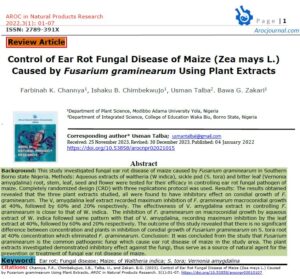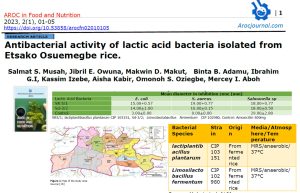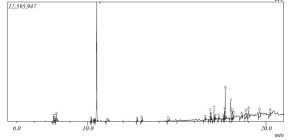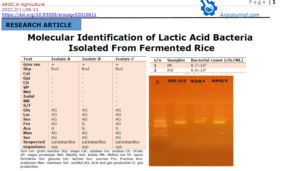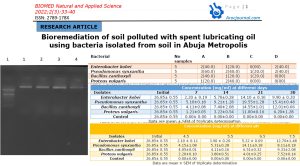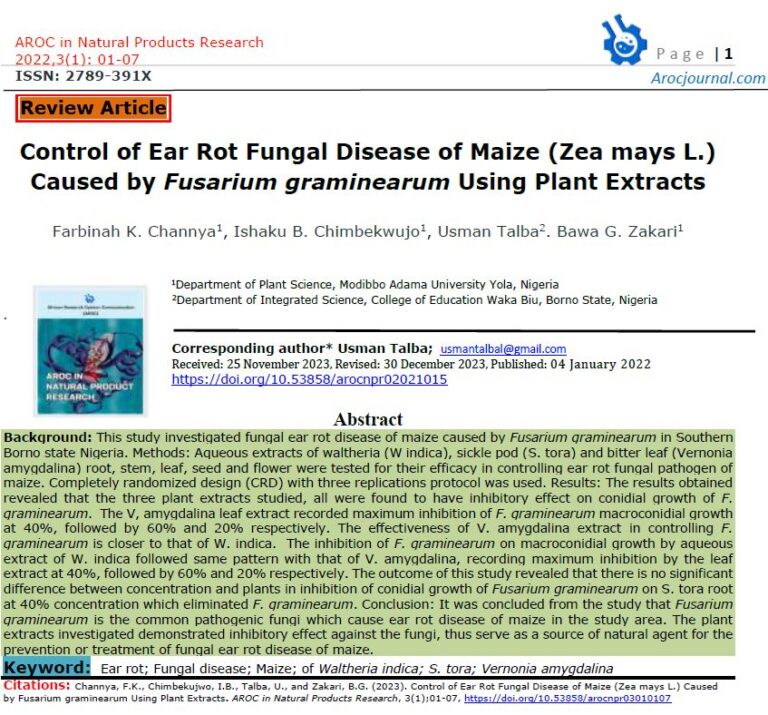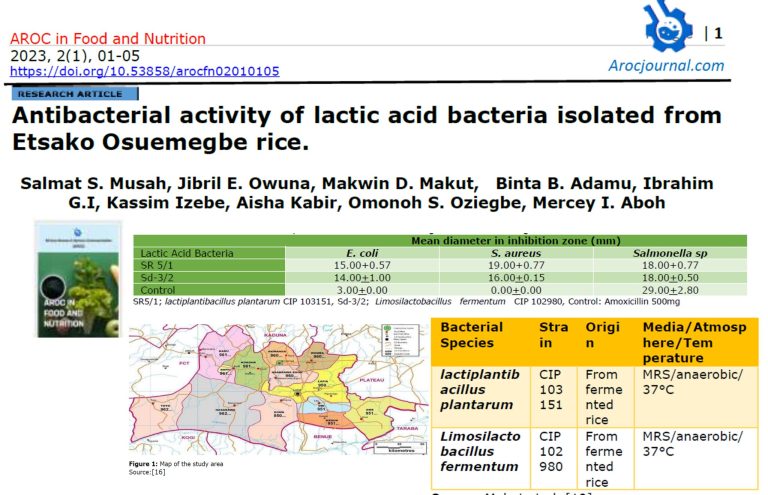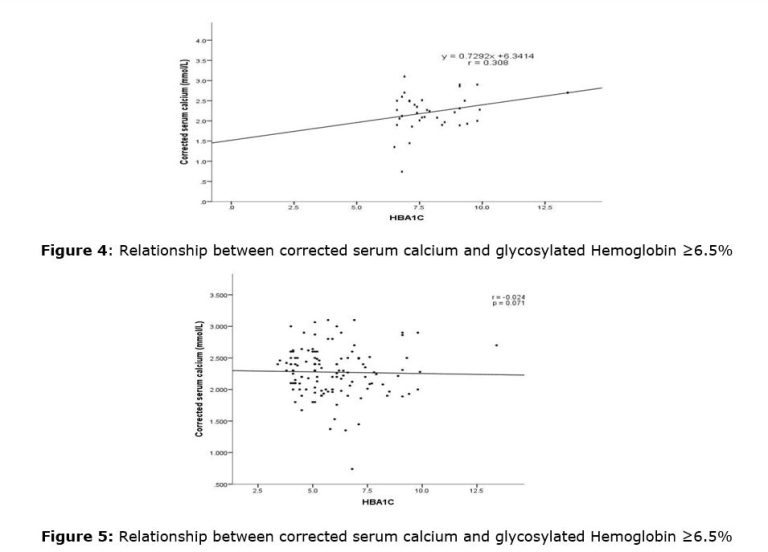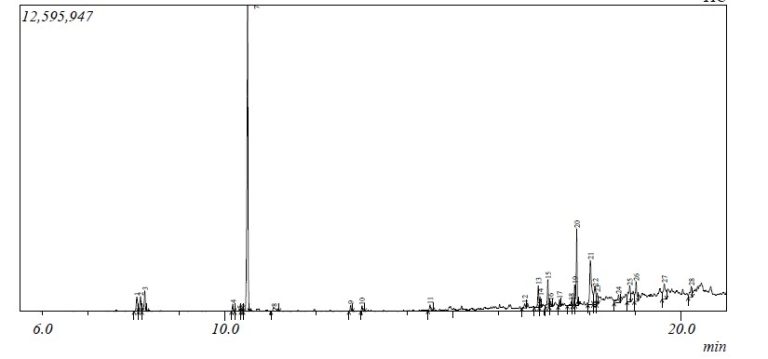1.0 Introduction.
Hypertension is a non-communicable disease that is characterized by an elevation in Systolic or diastolic blood pressure above normal ranges. It is prevalent in both developed and developing nations and becomes more prevalent as people age. The 2017 American College of Cardiology-American Heart Association (ACC-AHA) Hypertension Guideline adopted a lower threshold, in which hypertension is defined as a systolic BP of 130 mmHg or more or a diastolic BP of 80 mmHg or more. However, in recent years hypertension has been defined as a BP of 140/90 mmHg or more (1).
Theobroma cacao is a tiny tree that grows in the Amazon basin and other tropical regions of South and Central Africa. It is a member of the Theobroma genus. It falls under the Malvaceae subfamily Sterculioidea of the mallow family (2). The main groupings of phytochemicals found inside the seed are polyphenols, which are known to have several of biological effects, including antioxidant, antiapoptotic, anti-inflammatory, and anti-cancer (3). It also includes a huge number of other phytochemicals. Additionally, studies on the effects of cocoa have been conducted on a variety of medical ailments, including dyspepsia, nervous system disorders, blood circulation issues, and many others (3).
Additionally, studies on the effects of cocoa have been conducted in a variety of medical ailments, including dyspepsia, nervous system disorders, blood circulation issues, and many others (3). Procyanidins, also known as flavan-3-ols, are the primary flavonoids found in cocoa. Specifically, these substances are catechin and epicatechin oligomers and polymers with varying degrees of polymerization (DP). The cocoa seed also includes phenolic compounds like anthocyanins, phenolic acids, flavonols (quercetin, isoquercetin), flavones (luteolin, apigenin), flavanones (naringenin), and flavonols (luteolin, isoquercetin). These substances have a strong connection to antioxidant activity (4). Methylxanthines are among the intriguing substances found in cocoa. These alkaloids are competitive non-selective phosphodiesterase inhibitors and non-selective antagonists of the adenosine receptor (5). Caffeine and theophylline are present in cocoa seeds, albeit to a lesser extent than theobromine (6). These substances have been shown to have physiological and psychological impacts on people, including metabolic effects, neuroprotection, bronchodilation, diuresis, and gastric secretion stimulation (7).
Theobroma cacao promotes normal lipid profile. This is due to its ability to raise the serum concentrations of HDL-c, with a consequent decrease in the levels of LDL-c, TC, and TAG (2). Due to its wide consumption, especially in food industries, with attendant increase in cardiovascular disorders, evaluating the effect of Theobroma cacao on haemodynamic status becomes very necessary. This study aimed to evaluate the phytochemical composition of cocoa seeds and the effects of these chemicals on hypertension.
2.0 Materials and Method
2.1 Chemicals and Reagents
All chemicals and reagents used in this research were of analytical grade. Standard commercial test kits of Randox (Randox Laboratories Limited, UK), TECO (USA), QCA (Spain) and Spinereact (Spain) were also used for the study
2.2 Collection and preparation of the extract
Cocoa beans were collected from Bendeghe Afi village of Ikom, and were processed in Ukwu Investment Limited, Ikom, and Cross River State, Nigeria. Dried cocoa beans were further sun dried for about 14 days. The seeds were de-coated, pulverized and sieved into fine powder (cocoa powder). The ethanol and chloroform extracts of Theobroma Cacao were obtained by macerating 1000 g of the cocoa powder in 3500 ml each of the solvent for 48 hours after which each extract was filtered through Whatman No.1 filter paper. The filtrate was concentrated under reduced pressure. The yield was recorded and the extract was stored in a sterile bottle. The percentage yield of the extract was determined by weighing the cocoa powder before extraction and the concentrated extract obtained after evaporating to dryness and was calculated using the following formula:
% Yield = Weight (g) of extract evaporated to dryness × 100
Weight (g) of cocoa powder
2.3 Qualitative Phytochemical Analysis
The seed extracts of Theobroma cacao were analyzed for the presence of phytochemicals following standard procedures as follows: Alkaloids, anthraquinones, flavonoids and cardiac glycosides according to (8–10). Saponins (9, 11), tannins (11, 12), steroids (11). The procedure for the determination of each phytochemical is elaborated below.
2.4 In vivo antihypertensive studies
A total of 18 mice (15-20g) and 81 adult male albino rats (200-350g) were used for the acute toxicity test and the in vivo antihypertensive study (non-invasive) respectively. Additionally, a total of 24 rats were used for invasive antihypertensive study. All the animals used were obtained from the Animal House of the Department of Pharmacology, University of Benin, Benin City, Edo State. The rats were fed with standard rat pellets and water. The guide for the care and use of laboratory animal’s procedure were followed in this study(13). After acclimatization to laboratory conditions for 14 days, they were then allocated based on weight similarity into nine study groups of nine rats each. Ethanol and chloroform extracts of Theobroma Cacao (125mg) were separately dissolved in 2.5ml of vehicle (distilled water) daily for 21 days. The animals were orally administered with the extract at doses of 100, 200, and 300mg/kg b. w of the extracts for 21 days. The group and doses are summarized below:
Group 1: Feed + water (normal control).
Group 2: L-NAME only (hypertensive control)
Group 3: L-NAME + 100mg/kg of ethanol extract
Group 4: L-NAME + 200mg/kg of ethanol extract
Group 5: L-NAME + 300mg/kg of ethanol extract
Group 6: L-NAME + 100mg/kg of chloroform extract
Group 7: L-NAME + 200mg/kg of chloroform extract
Group 8: L-NAME + 300mg/kg of chloroform extract
Group 9: L-NAME + standard drug (nifedipine).
2.4.1 Acute Toxicity Test of Theobroma cacao in Mice
The LD50 determination of the extracts was done using the modified method of Lorke (1983)(14). The evaluation was done in two phases; in the first phase, three groups of three mice each received orally, 10, 100 and 1000 mg/kg b. w of the extract respectively. Clinical signs, symptoms of toxic effect and mortality were observed within 48 hours. In the second phase, three groups of three mice each received orally, 1600, 2900 and 5000 mg/kg b. w of the extract respectively. Clinical signs, symptoms of toxic effect and mortality were observed within 48 hours. The geometric mean of the consecutive doses for which there was zero and 100% survival of mice were recorded in both phases.
2.4.2 Measurement of Haemodynamic status (Invasive method)
The animal was fixed in a passive position on a dissecting table and the caudal vein was cannulated using a 23G scalp vein needle. A three way tap was connected to the cannula for the administration of graded doses of the extract. The blood pressure was measured using Ugo-Basile one unit channel recorder calibrated with sphygmomanometer by means of a chart. The measurement was done following the manufacturer’s manual. Normal saline (0.9% NaCl) (0.1ml) was first administered as the control, after a few minutes, graded doses (2.5 mg/kg, 5 mg/kg, 10 mg/kg, 20 mg/kg and 40 mg/kg) of the test sample were injected intravenously through the caudal vein.
2.4.3 Measurement of Haemodynamic status (Non-Invasive method)
The baseline blood pressure was measured and recorded; subsequent measurements were done before blood collection. This was done by tail-cuff method using non-invasive Ugo Basile, series 58500 blood pressure recorder while the invasive method was carried out using one unit channel recorder calibrated with a sphygmomanometer. The measurement was done following the manufacturer’s manual. Averages of three readings were taken for each rat and the temperature of the rat was monitored throughout the measurement period. Mean arterial blood pressure was calculated according to the following equation: DP+1/3
2.5 Statistical Analysis
Data obtained were expressed as mean ± SEM and tests of statistical significance were carried out using one-way and two-ways analysis of variance (ANOVA). Means with p values < 0.05 were considered as significant.
3.0 Results
3.1 Percentage Yield of Ethanol and Chloroform extracts of T. cacao
The percentage yield of ethanol and chloroform extracts of Theobroma cacao were 3.27% and 15.77% respectively.
3.2 Acute Toxicity
In the acute toxicity (LD50) test for the chloroform and ethanol extracts, no mortality or any observable change in the behaviour of animals used in this study was recorded up to 5000 mg/kg body weight of the extracts. This is presented in Table 1.
3.3 Qualitative Phytochemical Composition of the Chloroform and Ethanol Extracts of T. cacao
The qualitative phytochemical composition of chloroform and ethanol extracts of T. cacao showed the presence of bioactive compounds such as alkaloids, flavonoids, steroids, saponins, anthraquinone, tannins and cardiac glycosides, saponins were not detected in the chloroform extract. This is presented in Table 2.
3.4 Effect of Ethanol Extract of T. cacao on Hemodynamic status in Wistar Rats (Invasive method)
3.4.1 Effect of Ethanol Extract of T. cacao on Systolic Blood Pressure in Wistar Rats
The ethanol extract caused a significant (p < 0.05) fall in blood pressure in a dose dependent manner with the maximum effect occurring from 20mg/kg b.w. The effect of the extract on systolic blood pressure was significantly (p < 0.05) evident at a dose of 2.5mg/kg (P<0.05). This is presented in figure 1.
3.4.2 Effect of Ethanol Extract of T. cacao on Diastolic Blood Pressure in Wistar Rats
The ethanol extract of T. cacao caused a significant (p < 0.05) decrease on diastolic blood pressure all through the doses administered. It was observed that all the doses produced a vasodilatory effect and thus lowered blood pressure. The effect was dose dependent. This is presented in figure 2.
3.4.3 Effect of Ethanol Extract of T. cacao on Mean Arterial Blood Pressure in Wistar Rats
The ethanol extract of T. cacao caused a dose dependent effect on mean arterial blood pressure of Wistar rats. The extract caused a significant (p < 0.05) decrease at doses 2.5, 5, 10, 20 and 40 mg/kg. This is presented in figure 3.
3.4.4 Effect of Ethanol Extract of T. cacao on Pulse Rate in Wistar Rats
The ethanol extract of T. cacao induced a dose dependent effect on pulse rate. The effect of the extract was only statistically significant (p < 0.05) at doses 5 mg/kg and 10 mg/kg. This is presented in figure 4.
3.4.5 Effect of Ethanol Extract of T. cacao on Heart Rate in Wistar Rats
Figure 5 shows that, the ethanol extract of T. cacao exerted a blood pressure lowering (vasodepressor) effect on the anaesthetized rats. The effect was dose dependent as the fall in pressure became more pronounced with dose. It was an interesting observation that at 2.5mg/kg, the extract vasodepressor effect was biphasic and was followed by a short physiologic compensatory pressor effect. This is presented in figure 5.
3.4.6 Percentage Reduction of Ethanol Extract of T. cacao in Wistar Rats
The ethanol extract of T. cacao 2.5 mg/kg, 5 mg/kg, 10 mg/kg and 20 mg/kg body weight produced percentage reductions in SBP, DBP, MAP and HR in rats. This is presented in table 3.
3.4.7 Percentage Reduction of Ethanol Extract of T. cacao in Wistar Rats Treated with Atropine
From the 20mg/kg systolic of 100 mmHg, diastolic of 35 mmHg and MAP of 56.67 mmHg administration of atropine increased the systolic, diastolic and MAP to basal of 140 mmHg, 95 mmHg and 110 mmHg respectively. Ethanol extract of T. cacao administrations attenuated the effect of atropine and reduced the blood pressure to the level at which the animal became hypotensive and at a dose of 5 mg/kg we lost the animal. This is presented in table 4.
3.5 Effect of Chloroform and Ethanol Extracts of T. cacao on Hemodynamic status in Wistar rats (Non-Invasive method)
3.5.1 Effect of T.cacao extracts, Nifedipine and L-NAME on systolic blood pressure in rats
The effect of T. cacao extracts on systolic blood pressure is shown in Table 5. Group 2 showed significant (p < 0.05) increase across the row compared to baseline, between day 14th and day 21st and column compared to group 1. These were significant (p < 0.05) decreases in systolic blood pressure in all the groups compared with the L – NAME untreated group 2 at day 14th and day 21st. There were no significant (p > 0.05) difference in group 3, 4, 6, 7, 8 and 9 relative to the baselines. Group 5 showed significant (p < 0.05) decrease compared with the baseline. All the treated groups showed no significant (p > 0.05) difference between day 14th and day 21st.
3.5.2 Effect of T.cacao extracts Nifedipine and L-NAME treatment on diastolic blood pressure in rats
The effect of T.cacao on diastolic blood pressure is presented in table 6. Group 2 with untreated hypertensive conditions was significantly (p < 0.05) increased across the row compared with the baseline, between day 14th and day 21st and column compared with the group 1. Group 3, 4, 5, 6, 7, 8 and 9 showed a significant decrease (p< 0.05) in diastolic blood pressure levels in rats when compared to group 2 (hypertensive untreated) at day 14th and day 21st. All the treated groups decreased significantly (p < 0.05) accept groups 3, 4 and 9 across the rows compared with the baseline, day 14th and day 21st.
3.5.3 Effect of T.cacao extracts Nifedipine and L-NAME treatment on pulse pressure in rats
The effect of T.cacao on pulse pressure is presented in table 7. there were significant (p < 0.05) decreases in pulse rates in rats with hypertensive conditions (group 2) across the row compared with the baseline, between day 14th and day 21st and column compared with the group 1 (control). Groups 3, 4, 5, 6, 7, 8 and 9 showed significant (p < 0.05) decreases relative to group 2 (hypertensive untreated) at day 14th and day 21st. There was no significant (p < 0.05) difference in group 3 compared with the baseline, between day 14th and day 21st. Groups 4, 5, 8 and 9 showed significant (p < 0.05) decrease compared with the baseline, between day 14th and day 21st. Groups 6 and 7 showed no significant (p > 0.05) difference between baseline and day 14th but there were significant decreases between baseline and day 21stand between day 14th and day 21st of administration.
3.5.4 Effect of T.cacao extracts Nifedipine and L-NAME treatment on pulse pressure in rats
The effect of T.cacao extracts on Mean Arterial Pulse was shown in table 8. There was a significant increase (p < 0.05) in MAP in group 2 (hypertensive untreated) rats relative to group 1 (control) and baseline, between day 14th and day 21st. There were significant (p < 0.05) decreases in all the groups treated with ethanol extract, chloroform extract and nifedipine concurrent with L-NAME compared to group 2 (hypertensive untreated). Group 3 showed no significant (p < 0.05) difference across the row compared with the baseline. Groups 4, 5, 6, 7 and 8 showed significant (p < 0.05) decreases across the row compared with the baseline, between day 14th and day 21st but there was no significant (p < 0.05) difference in group 8 between day 14th and day 21st of treatments. Group 9 showed no significant (p < 0.05) difference between baseline and day 14th but there was a significant (p < 0.05) decrease between baseline and day 21st of administration.
Table 1: Acute toxicity (LD50) of T. cacao Extracts.
| Dosage mg/kg body weight | Mortality | |
| Phase I | ||
| Normal control | 10 | 0/3 |
| L-NAME only (HTN Control) | 100 | 0/3 |
| 1000 | 0/3 | |
| Phase II | ||
| Normal Control | 1600 | 0/3 |
| L-NAME only (HTN Control) | 2900 | 0/3 |
| 100 mg/kg b.w. of EE + L-NAME | 5000 | 0/3
|
Table 2: Preliminary Phytochemical screening of Theobroma cacao seeds
| Phytochemicals | Ethanol | Chloroform |
| Flavonoids | + | + |
| Steroids | + | + |
| Saponins | + | ND |
| Anthraquinone | + | + |
| Tannins | + | + |
| Cardiac Glycosides | + | + |
Key = + Detected. ND = Not detected

Fig. 1: Effect of ethanol extract of T. cacao on systolic blood pressure in L-NAME-induced hypertensive rats. Each point on the graph represents Mean ±SEM, n=4.

Fig. 2: Effect of ethanol extract of T. cacao on diastolic blood pressure in L-NAME-induced hypertensive rats: Each point on the graph represents Mean ±SEM, n=4.

Fig. 3: Effect of ethanol extract of T. cacao on mean arterial blood pressure in L-NAME-induced hypertensive rats: Each point on the graph represents Mean ±SEM, n=4.

Fig. 4: Effect of ethanol extract of T. cacao on pulse rate in L-NAME-induced hypertensive rats. Each point represent Mean ±SEM, n=4.

Fig. 5: Effect of ethanol extract of T. cacao on heart rate in L-NAME-induced hypertensive rats. Each point represent Mean ±SEM, n=4.
Table 3: Percentage reductions of SBP, DBP, MAP and HR in rats treated with graded doses of ethanol extract of T. cacao
| DOSES (mg/kg) | SBP (mmHg) | % Fall (%) | DBP (mmHg) | % Fall (%) | MAP (mmHg) | % Fall (%) | HEART RATE (bpm) | % Fall (%) |
| Basal | 165 | 135 | 145 | 50 | ||||
| 2.5 | 125 | 24.24 | 60 | 55.56 | 81.67 | 43.68 | 44 | 12 |
| 5 | 115 | 30.30 | 50 | 62.96 | 71.67 | 50.57 | 37 | 26 |
| 10 | 110 | 33.33 | 45 | 66.67 | 66.67 | 54.02 | 31 | 38 |
| 20 | 100 | 39.39 | 35 | 74.07 | 56.67 | 60.91 | 28 | 44 |
Table 4: Percentage reductions of SBP, DBP and MAP in rats treated with atropine and graded doses of ethanol extract of T. cacao
| DOSES (mg/kg) | SBP (mmHg) | % Fall (%) | DBP (mmHg) | % Fall (%) | MAP (mmHg) | % Fall (%) |
| Basal | 140 | 95 | 110 | |||
| 2.5 | 20 | 85.71 | 10 | 89.47 | 13.33 | 87.88 |
| 5 | 15 | 89.29 | 10 | 89.47 | 11.67 | 89.39 |
| 10 | – | – | – | – | – | – |
| 20 | – | – | – | – | – | – |
Table 5: Effect of the extracts on systolic blood pressure in L-NAME- induced hypertensive rats
| Treatment Groups | Systolic Blood Pressure (mmHg) | ||
| Baseline | Day 14 | Day 21 | |
| Normal Control | 122±1.4 | 123±1.0 | 125±1.2 |
| L-NAME only (HTN Control) | 121±0.4a | 149±3.9abc | 165±2.8abc |
| 100 mg/kg b.w. of EE + L-NAME | 122±1.3 | 122±1.3b | 126±2.0b |
| 200 mg/kg b.w. of EE + L-NAME | 122±1.7 | 117±4.0b | 115±5.0b |
| 300 mg/kg b.w. of EE + L-NAME | 121±1.1a | 116±2.5ab | 111±1.6ab |
| 100 mg/kg b.w. of CE + L-NAME | 119±1.8 | 118±1.4b | 121±1.1b |
| 200 mg/kg b.w. of CE + L-NAME | 118±1.3 | 119±2.3b | 116±4.0b |
| 300 mg/kg b.w. of CE + L-NAME | 121±0.8 | 118±2.8b | 119±0.6b |
| Standard drug (Nifedipine) | 121±1.8 | 120±1.6b | 121±2.0b |
Means values with different letters as superscripts across the row and columns are considered significant at p < 0.05. Results are means ± SEM (n = 3); Superscripts a: comparing with baseline, b: comparing with group 2, c: comparing between day 14 and day 21
Group 1 = Normal Control Group 2 = L-NAME only (HTN Control)
Group 3 = 100 mg/kg b.w. of EE + L-NAME Group 4 = 200 mg/kg b.w. of EE + L-NAME
Group 5 = 300 mg/kg b.w. of EE + L-NAME Group 6 = 100 mg/kg b.w. of CE + L-NAME
Group 7 = 200 mg/kg b.w. of CE + L-NAME Group 8 = 300 mg/kg b.w. of CE + L-NAME
Group 9 = Standard drug (Nifedipine)
Table 6: Effect of the extracts on diastolic blood pressure in L-NAME- induced hypertensive rats
| Treatment Groups | Systolic Blood Pressure (mmHg) | ||
| Baseline | Day 14 | Day 21 | |
| Normal Control | 78±0.9 | 79±0.6 | 78±0.8 |
| L-NAME only (HTN Control) | 79±0.5a | 90±3.7ac | 108±2.9ac |
| 100 mg/kg b.w. of EE + L-NAME | 77±1.0 | 78±0.6b | 79±0.8b |
| 200 mg/kg b.w. of EE + L-NAME | 78±1.2 | 75±2.1b | 73±7.5b |
| 300 mg/kg b.w. of EE + L-NAME | 78±1.0a | 73±2.0ab | 66±3.0ab |
| 100 mg/kg b.w. of CE + L-NAME | 79±1.3a | 75±1.9b | 73±1.7ab |
| 200 mg/kg b.w. of CE + L-NAME | 78±0.4a | 73±1.1b | 73±3.0ab |
| 300 mg/kg b.w. of CE + L-NAME | 79±0.1a | 74±2.1ab | 70±2.9b |
| Standard drug (Nifedipine) | 77±1.0 | 78±2.0b | 74±2.6b |
Means values with different letters as superscripts across the row and columns are considered significant at p < 0.05. Results are means ± SEM (n = 3); Superscripts a: comparing with baseline, b: comparing with group 2, c: comparing between day 14 and day 21
Group 1 = Normal Control Group 2 = L-NAME only (HTN Control)
Group 3 = 100 mg/kg b.w. of EE + L-NAME Group 4 = 200 mg/kg b.w. of EE + L-NAME
Group 5 = 300 mg/kg b.w. of EE + L-NAME Group 6 = 100 mg/kg b.w. of CE + L-NAME
Group 7 = 200 mg/kg b.w. of CE + L-NAME Group 8 = 300 mg/kg b.w. of CE + L-NAME
Group 9 = Standard drug (Nifedipine)
Table 7: Effect of the extracts on pulse pressure in L-NAME- induced hypertensive rats
|
Treatment Groups |
Pulse Pressure (mmHg) | ||
| Baseline | Day 14 | Day 21 | |
| Normal Control | 404±16.1 | 418±15.3 | 404±29.9 |
| L-NAME only (HTN Control) | 413±11.9a | 269±10.4abc | 134±29.3abc |
| 100 mg/kg b.w. of EE + L-NAME | 407±9.1 | 389±14.6bc | 373±20.5b |
| 200 mg/kg b.w. of EE + L-NAME | 443±14.4a | 371±23.1ab | 306±26.5ab |
| 300 mg/kg b.w. of EE + L-NAME | 400±5.9a | 351±8.1abc | 333±32.6abc |
| 100 mg/kg b.w. of CE + L-NAME | 337±21.7a | 346±15.9bc | 262±31.9abc |
| 200 mg/kg b.w. of CE + L-NAME | 407±15.1a | 402±6.4bc | 304±40.7abc |
| 300 mg/kg b.w. of CE + L-NAME | 400±3.0a | 353±25.2ab | 365±10.6ab |
| Standard drug (Nifedipine) | 419±13.1a | 369±14.2ab | 393±40.1ab |
Means values with different letters as superscripts across the row and columns are considered significant at p < 0.05. Results are means ± SEM (n = 3); Superscripts a: comparing with baseline, b: comparing with group 2, c: comparing between day 14 and day 21
Group 1 = Normal Control Group 2 = L-NAME only (HTN Control)
Group 3 = 100 mg/kg b.w. of EE + L-NAME Group 4 = 200 mg/kg b.w. of EE + L-NAME
Group 5 = 300 mg/kg b.w. of EE + L-NAME Group 6 = 100 mg/kg b.w. of CE + L-NAME
Group 7 = 200 mg/kg b.w. of CE + L-NAME Group 8 = 300 mg/kg b.w. of CE + L-NAME
Group 9 = Standard drug (Nifedipine)
Table 8: Effect of the extracts on MAP in L-NAME- induced hypertensive rats
| Treatment Groups | MAP (mmHg) | ||
|
Baseline |
Day 14 | Day 21 | |
| Normal Control | 213±15.2 | 218±5.4 | 224±6.4 |
| L-NAME only (HTN Control) | 217±4.1a | 263±7.7abc | 331±9.6abc |
| 100 mg/kg b.w. of EE + L-NAME | 213±2.9 | 203±5.1b | 198±7.8b |
| 200 mg/kg b.w. of EE + L-NAME | 225±5.6a | 198±8.8abc | 175±1.3abc |
| 300 mg/kg b.w. of EE + L-NAME | 211±2.0a | 190±2.8abc | 148±3.4abc |
| 100 mg/kg b.w. of CE + L-NAME | 191±8.2a | 185±9.6bc | 160±1.1abc |
| 200 mg/kg b.w. of CE + L-NAME | 214±4.8a | 196±6.9abc | 174±1.0abc |
| 300 mg/kg b.w. of CE + L-NAME | 212±0.9a | 186±9.3ab | 185±1.0ab |
| Standard drug (Nifedipine) | 217±5.1a | 201±5.2b | 194±7.9ab |
Means values with different letters as superscripts across the row and columns are considered significant at p < 0.05. Results are means ± SEM (n = 3); Superscripts a: comparing with baseline, b: comparing with group 2, c: comparing between day 14 and day 21
Group 1 = Normal Control Group 2 = L-NAME only (HTN Control)
Group 3 = 100 mg/kg b.w. of EE + L-NAME Group 4 = 200 mg/kg b.w. of EE + L-NAME
Group 5 = 300 mg/kg b.w. of EE + L-NAME Group 6 = 100 mg/kg b.w. of CE + L-NAME
Group 7 = 200 mg/kg b.w. of CE + L-NAME Group 8 = 300 mg/kg b.w. of CE + L-NAME
Group 9 = Standard drug (Nifedipine)
4.0 Discussion
In the present study, the acute toxicity, qualitative phytochemical screening, and the hypotensive effect of T.cacao ethanol extracts were investigated. Plant extracts have components that have been shown in studies to have physiological and therapeutic effects (15). Secondary plant metabolites known as phytochemicals have a variety of pharmacological and metabolic impacts on living things (16). They have a variety of purposes, some of which include determining plant color, strength, defense against predators, and luring insects for pollination and feeding(17). The qualitative phytochemical evaluation of T.cacao showed the presence of alkaloids flavonoids, steroids, saponins, anthraquinones, tannins, and Cardiac glycosides in the ethanol and chloroform extracts but saponins were not present in the chloroform extract. T.cacao extract had shown the presence of alkaloids which have been associated with medical uses for centuries.
Alkaloids are known for their analgesic, antiviral, antifungal, anticancer, antioxidant, antiplasmodic, and antibacterial properties (18). They often have pharmacological effects and are used as medications for example as anticancer compounds, antihypertensive agents and antiasthma therapeutics. They act on a diversity of metabolic systems in humans and invoke a bitter taste (19) which may be responsible for protection against predators and parasites. The present study investigated the effect of ethanol extract of Theobroma cacao on hemodynamic status. Administration of the extract caused a significant fall in systolic blood pressure, diastolic blood pressure, mean arterial blood pressure, and heart rate in a dose dependent manner. It was observed that all the doses produced a vasodilatory effect and thus lowered blood pressure. This may be due to the antioxidant properties of T. cacao and may also be associated with improved nitric oxide bioavailability. It is now accepted that the vascular endothelium generates nitric oxide via constitutively active eNOS both under basal conditions and in response to pharmacological (muscarinic agonists) or mechanical stimuli (shear stress related to blood flow). The findings in this study are supported by several studies (20,21).
Literature has shown that blood pressure-lowering agents act by interfering with any of the blood pressure regulatory mechanisms (22). Inhibition of the muscarinic receptor, nitric oxide synthase, and guanyladenylyl cyclase results in elevated blood pressure and it’s stimulation results in the contrary (22,23). The possibility that the extract could be inducing its hypotensive effect via any mechanism was investigated using atropine. The rats were pretreated with atropine (muscarinic receptor antagonist) and these results revealed that the muscarinic receptor antagonist did not inhibit the hypotensive activity of ethanol extract suggesting that the extract is not relaxing the smooth muscle via muscarinic receptors. The study also revealed that, the extract was even more potent in the presence of atropine than in the absence of atropine and after the dose of 5mg/kg, the animal died because the atropine exaggerated the blood pressure making the animal hypotensive.
The percentage reductions of systolic blood pressure, diastolic blood pressure, mean arterial blood pressure and heart rate in rats treated with graded doses of ethanol extract of T. cacao was calculated and the results showed that 20mg/kg had the highest percentage reduction. This indicates that the extract reduced blood pressure in a dose dependent manner. Study has shown that Theobroma cacao promotes normal lipid profile. This is due to its ability to raise the serum concentrations of HDL-c, with a consequent decrease in the levels of LDL-c, TC, and TAG (24). The ability of Theobroma cacao to reduced blood pressure could be due to the presence of flavonoids and polyphenols known to have antioxidant and anti-hypertensive properties (25). The oral administration of standard drug, ethanol and chloroform extracts of T. Cacao at doses of 100, 200 and 300 mg/kg b.wconcurrent with L-NAME at day 14 and 21 significantly reduced systolic blood pressure (SBP), diastolic blood pressure (DBP), pulse pressure (PP) and mean arterial pressure (MAP) when compared with baseline and L-NAME treated rats but there were no observable change in SBP when compared with baseline.
A rat model of hypertension induced by Nw nitro-L-arginine methyl ester hydrochloride (L-NAME), a nitric oxide synthase (NOS) inhibitor, has been widely used to mimic hypertension in humans (26; 27). It has been reported that, L-NAME – treated rats have down-regulated eNOS protein expression in blood vessels and depletion of Serum nitric oxide levels which leads to systemic vasoconstriction, increased vascular resistance and high blood pressure (28; 29). The exact mechanism is based on the fact that nitric oxide is synthesized and released from endothelial cells to mediate vasorelaxation (30) and L-NAME inhibits nitric oxide production leading to an increased total peripheral resistance and high blood pressure (31). This mechanism is supported by several studies who reported that, disruption of plasma nitric oxide levels and reduced protein eNOS expression is found in long-term L-NAME treatment (32; 33).
Treatment of rats with L-NAME for 21 days exhibited haemodynamic alterations with a progressive increase in blood pressure resulting from increased systolic blood pressure, diastolic blood pressure, pulse pressure and mean arterial pressure. The administration of T. Cacao extract in this study showed that T. Cacao prevented the rise in blood pressure as compared with L-NAME-treated rats. The protection may be due to the antioxidant properties of T. Cacao and may also be associated with improved nitric oxide bioavailability. Ethanol extract of T. cacao at a higher dose (300 mg/kg b.w) was more potent than the chloroform extract and standard drug.
Conclusion:
The study suggests that Theobroma cacao prevents increase in blood pressure. This is due to its ability to reduce blood pressure even in the presence of atropine (muscarinic receptor) and its ability to reduce blood pressure may also be due to the presence of flavonoids and polyphenols known to have antioxidant and anti-hypertensive properties. This study therefore provides a basis for the use of Theobroma cacao as an alternative in the prevention, management, or control of hypertension.
Authors’ contribution: EIA conceptualized and designed the study, all the authors participated in the laboratory experiments, GPI and GBA carried out the statistical analyses, ARA wrote the first draft of the manuscript. All authors read and approved the final manuscript.
Funding source: No funding
Ethical approval for animal studies: Ethical approval was obtained from the faculty animal research ethics committee of the Faculty of Basic Medical Sciences (FAREC-FBMS) University of Calabar with the approval number: 022-TBCM-0521
References
- Whelton PK, Carey RM, Aronow WS, Casey DE, Collins KJ, Dennison Himmelfarb C, et al. 2017 ACC/AHA/AAPA/ABC/ACPM/AGS/APhA/ASH/ASPC/NMA/PCNA Guideline for the Prevention, Detection, Evaluation, and Management of High Blood Pressure in Adults: A Report of the American College of Cardiology/American Heart Association Task Force on Clinical Practice Guidelines. J Am Coll Cardiol. 2018 May 15;71(19):e127–248.
- Agwupuye EI, Agboola AR, Assumpta AC, Ezeanyika LUS, Ukpanukpong RU. Evaluation of the toxicological effect of methanol extract of unfermented Theobroma cacao in Wistaralbino rats. AROC in Natural Products Research. 2022 Sep 22;02(02):16–26.
- Çlnar Ö, Brzezicha B, Grunert C, Kloetzel PM, Beier C, Peuker CA, et al. High-affinity T-cell receptor specific for MyD88 L265P mutation for adoptive T-cell therapy of B-cell malignancies. J Immunother Cancer. 2021 Jul 30;9(7).
- Tomaru M, Takano H, Osakabe N, Yasuda A, Inoue K ichiro, Yanagisawa R, et al. Dietary supplementation with cacao liquor proanthocyanidins prevents elevation of blood glucose levels in diabetic obese mice. Nutrition. 2007 Apr 1;23(4):351–5.
- Cova F, Garcia F, Oyanadel C, Villagran L, Páez D, InostrozaC. Adaptive Reflection on Negative Emotional Experiences: Convergences and Divergence Between the Processing-Mode Theory and the Theory of Self-Distancing Reflection. Front Psychol. 2019 Sep 3;10.
- Berkban T, Boonprom P, Bunbupha S, Welbat JU, Kukongviriyapan U, Kukongviriyapan V, et al. Ellagic acid prevents L-NAME-induced hypertension via restoration of eNOS and p47phox expression in rats. Nutrients. 2015 Jun 30;7(7):5265–80.
- Murphy KJ, Chronopoulos AK, Singh I, Francis MA, Moriarty H, Pike MJ, et al. Dietary flavanols and procyanidinoligomers from cocoa (Theobroma cacao) inhibit platelet function. American Journal of Clinical Nutrition.2003;77(6):1466–73.
- Sorescu AA, Nuta A, Ion RM, Ion Iancu L. 2018. Qualitative Analysis of Phytochemicals from Sea Buckthorn and Gooseberry. https://www. intechopen.com/chapters/61610. http://dx.doi.org/10.5772/intechopen.77365
- Oladimeji OH, Usifoh CO. Phytochemical and antimicrobial studies on some Nigerian medicinal plants. Journal of Pharmacy & Bioresources. 2015 Dec 2;12(2):156.
- Onwukaeme DN, Ikuegbvweha TB, Asonye CC. Evaluation of Phytochemical Constituents, Antibacterial Activities and Effect of Exudate of Pycanthus Angolensis Weld Warb(Myristicaceae) on Corneal Ulcers in Rabbits [Internet]. Vol. 6, Tropical Journal of Pharmaceutical Research. 2007. Available from: http://www.tjpr.org
- Lacaille-Dubois MA, Wagner H. Bioactive saponins from plants: An update. Studies in Natural Products Chemistry. 2000 Jan 1;21(PART B):633–87.
- Mueller-Harvey I. Analysis of hydrolysable tannins. AnimFeed Sci Technol. 2001 May 16;91(1–2):3–20.
- Akinmoladun AC, Ibukun EO, Afor E, Akinrinlola BL, Onibon TR, Akinboboye AO, et al. Chemical constituents and antioxidant activity of Alstonia boonei. Afr J Biotechnol[Internet]. 2007;6(10):1197–201. Available from: http://www.academicjournals.org/AJB
- Lorke D. A new approach to practical acute toxicity testing.Arch Toxicol. 1983;54(4):275–87. Available from: https://doi.org/10.1007/BF01234480
- Rodríguez-Yoldi MJ. Anti-inflammatory and antioxidant properties of plant extracts. Vol. 10, Antioxidants. MDPI; 2021.
- Sanchez S, Demain AL. Secondary Metabolites. In: Comprehensive Biotechnology, Second Edition. Elsevier Inc.; 2011. p. 155–67.
- Teoh ES. Secondary Metabolites of Plants. In: Medicinal Orchids of Asia. Springer International Publishing; 2016. p. 59–73.
- Dey P, Kundu A, Kumar A, Gupta M, Lee BM, Bhakta T, et al. Analysis of alkaloids (indole alkaloids, isoquinolinealkaloids, tropane alkaloids). Recent Advances in Natural Products Analysis. 2020 Jan 1;505–67.
- Kurek J. Introductory Chapter: Alkaloids – Their Importance in Nature and for Human Life. In: Alkaloids – Their Importance in Nature and Human Life. IntechOpen; 2019.
- Xu S, Touyz RM. Reactive oxygen species and vascular remodelling in hypertension: Still alive. Canadian Journal of Cardiology. 2006 Sep 1;22(11):947–51.
- Kurosawa T, Itoh F, Nozaki A, Nakano Y, Katsuda SI, Osakabe N, et al. Suppressive effect of cocoa powder on atherosclerosis in Kurosawa and Kusanagi-hypercholesterolemicrabbits. J Atheroscler Thromb. 2005;12(1):20–8.
- Adeneye AA, Ajagbonna OP, Mojiminiyi FBO, Odigie IP, Ojobor PD, Etarrh RR, et al. The hypotensive mechanisms for the aqueous stem bark extract of Musanga cecropioides in Sprague-Dawley rats. J Ethnopharmacol. 2006 Jun 30;106(2):203–7.
- Nwokocha CR. Possible Mechanism of Action of the Hypotensive Effect of Peperomia pellucida and Interactions between Human Cytochrome P450 Enzymes. Med AromatPlants (Los Angel). 2012;01(04).
- Agwupuye EI, Atiang Beshel J, Anosike AC, Ezeanyika LU. Methanol Extract of Unfermented Theobroma Cacao Promotes Normal Lipid Profile of Wistar International Journal of Trend in Scientific Research and Development. (ijtsrd), 2019 ISSN: 2456- 6470, Volume-3 | Issue-3, pp.190-193,
- Kelm MA, Johnson JC, Robbins RJ, Hammerstone JF, Schmitz HH. High-performance liquid chromatography separation and purification of cacao (Theobroma cacao L.) procyanidins according to degree of polymerization using a diolstationary phase. J Agric Food Chem. 2006 Mar 8;54(5):1571–6.
- Ribeiro, M. O., Antunes, E., de Nucci, G., Lovisolo, S. M. and Zatz, R. (1992). Chronic inhibition of nitric oxide synthesis. A new model of arterial hypertension.Hypertension. 20: 298–303.
- Kopincova, J., Puzserova, A., Bernatova, I. (2012). L-NAME in the cardiovascular system— Nitric oxide synthase activator? Pharmacology Reports. 64: 511–520.
- Nakmareong, S., Kukongviriyapan, U., Pakdeechote, P., Kukongviriyapan, V., Kongyingyoes, B., Donpunha, W., Prachaney, P. and Phisalaphong, C. (2012). Tetrahydrocurcumin alleviates hypertension, aortic stiffening and oxidative stress in rats with nitric oxide deficiency. Hypertension Research. 35: 418–425.
- Silambarasan, T., Manivannan, J., Krishna Priya, M., Suganya, N., Chatterjee, S. and Raja, B. (2014).Sinapicacidpreventshypertensionandcardiovascularremodelingin pharmacological model of nitric oxide inhibited rats. PLoS ONE. 9:115682.
- Ignarro, L. J. (2002). Nitric oxide as a unique signaling molecule in the vascular system: A historical overview. Journal of Physiology and Pharmacology. 53: 503–514.
- Gardiner, S. M., Compton, A. M., Bennett, T., Palmer, R. M.and Moncada, S. (1990). Control of regional blood flow by endothelium-derived nitric oxide. Hypertension. 15: 486–492.
- Nyadjeu, P., Nguelefack-Mbuyo, E. P., Atsamo, A. D., Nguelefack, T. B., Dongmo, A. B. and Kamanyi, A. (2013). Acute and chronic antihypertensive effects of Cinnamomum zeylanicum stem bark methanol extract in L-NAME-induced hypertensive rats. BMC Complimentary and Alternative medicine. 13: 27.
- Pakdeechote, P., Prachaney, P., Berkban, W., Kukongviriyapan, U., Kukongviriyapan, V., Khrisanapant, W. and Phirawatthakul, Y. (2014). Vascular and antioxidant effects of an aqueous Menthacordifolia extract in experimental N(G)-nitro-L-arginine methyl ester- induced hypertension. Journal of Biosciences. 69: 35–45.


